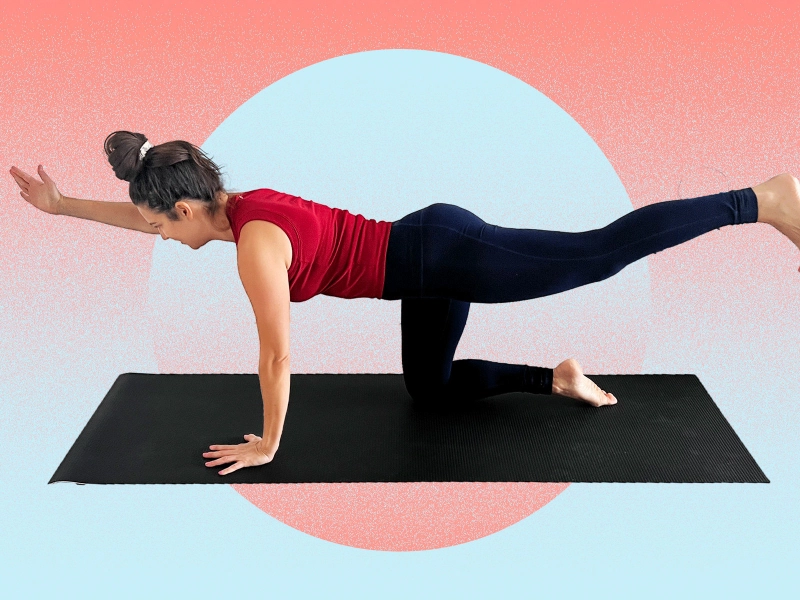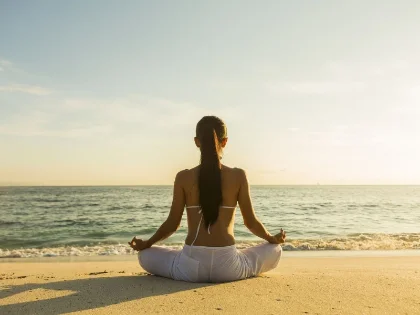How to Build a Stronger Core
Your ability to workout and do sports well depends on your core. Core strength is essential for all full-body movements, including riding, swimming, baseball, golfing, and tennis.
These muscles, which include the abdominal and pelvic floor muscles, alleviate back discomfort, enhance stability and posture, and serve as a strong base for all other workouts. They also facilitate healthy breathing when exercising.
Exercises for Core Strengthening

Many people concentrate on strengthening their arms and legs, but for total strength, power, and endurance, a strong core is just as vital. The muscles in your back, hips, and abdomen, together known as the core muscles, give your upper and lower body stability. In addition, they aid in injury prevention and proper posture.
Exercises that demand your core to resist movement and multi-muscle motions, such as deadlifts and squats, should be included in core training. According to Sam Yo, a certified personal trainer at Equinox Fitness in New York City, "core-strengthening movements like the plank, reverse crunch, and side-plank are good examples."
These exercises target and strengthen the muscles in your back known as the erector spinae, the transverse abdominis, the rectus abdominis (the area along your front stomach that most people think of as "abs"), and the pelvic floor. Moreover, they aim for your obliques. Weights are not necessary for core exercises.
Activity for Core Stability

Having a strong core is crucial for stability and balance, whether you play sports or go about your everyday business. In addition to improving movement patterns and posture, a strong core also lessens back pain.
Together, the abdominal, hip girdle, and paraspinal muscles form the group of muscles known as the core muscles, which stabilize the spine. By teaching these muscles to engage and contract with more force and accuracy, core stability exercises aid in the improvement of stability.
You can perform these exercises using only your body weight or with some simple tools like a mat or stability ball. A plank is a basic yet efficient exercise for core stability. Beginning with your shoulders exactly over your elbows, drop yourself to the floor while still on your stomach. Keeping your hips and knees off the floor, contract your abdominal muscles to form a straight line from your head to your heels. Do ten repetitions of this workout. The number of sets or repetitions should be increased as your strength improves.
Variations for Core Strengthening

Numerous workouts exist that are intended to assist in developing your core strength. Some of these, like the plank, bird dog, and crunches, you might be familiar with.
But there are tons more variants of core strengthening exercises than just those, and your core will get stronger the more you perform them. In addition to the muscles in your abdomen, your core also consists of the muscles in your pelvic floor, lower back (erector spinae), and inner and outer thighs.
This is why mixing up your core workouts with a variety of styles is crucial for strengthening your body as a whole and developing your abs as well as other body parts. This is particularly true for exercises like running and climbing that call for a strong core. In actuality, a strong core can improve your endurance and lower your chance of injury. This is due to the fact that your core gives the rest of your body a stable base upon which to move.
Variations in Core Stability

Being able to hold a plank longer than your favorite TikTok video star and having six-pack abs are just two aspects of having a strong core. Your body as a whole is stabilized by your core. You'll struggle with everything without it, from everyday activities to sports performances. Most people who say they have a "bad back" actually just need stronger muscles for their core stability.
According to Kira Stokes, a NASM-certified trainer and the creator of the fitness software Stokes Fit, combining stability and strength workouts is the best method to develop a stronger core. She suggests incorporating the side bridge, bird dog, and stir pot into your practice as additional core stability variations.
Start in a standard plank position, then raise your hips to a slight elevation by placing your left knee exactly beneath your shoulder. Continue engaging your core to prevent your lower back from arching, then switch to the opposite side. Perform ten reps in three sets for each side.








